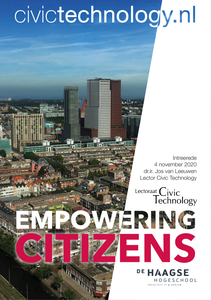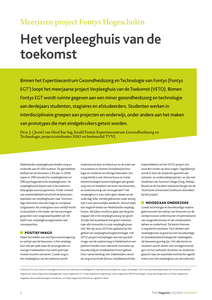Background: Dental fear and uncooperative behavior can hinder dental treatment quality. Pediatric Procedural Sedation and Analgesia (PPSA) is used to facilitate treatment when the coping capacity is exceeded. Out-of-hospital PPSA has been associated with more adverse outcomes compared to when it is used in hospital-based settings. The updated Dutch PPSA guidelines have increased costs and raised concerns about the accessibility of specialized high-quality dental care for children in the Netherlands. This study aimed to investigate the impact of the updated 2017 guidelines on the occurrence rate of adverse events during PPSA in twelve Dutch dental clinics. Methods: The data of 25,872 children who were treated at twelve dental clinics between 1997 and 2019 were analyzed. A logistic two-level mixed-effects model was used to estimate the updated guidelines’ impacts on adverse events. Results: The OR of the occurrence rate of an adverse event adjusted for age, weight, and duration of treatment was 0.75 (95% CI 0.64–0.89) after the implementation of the updated guidelines. This outcome was significant with p = 0.001, indicating a protective effect. Conclusions: Our findings demonstrate that there was a significant reduction in adverse events after the implementation of the updated guideline and highlight the importance of adhering to evidence-based practices in out-of-hospital dental clinics.
DOCUMENT

In dit hoofdstuk staat de plaats van klinische expertise binnen Evidence-based practice centraal. Allereerst wordt een korte schets gegeven van de ontwikkeling van EBP. Vervolgens wordt ingezoomd op de bijdrage van klinische expertise aan EBP. In het bijzonder wordt stilgestaan bij instrumenten om klinische expertise te expliciteren en te toetsen.
LINK
Frail elderly patients undergoing major surgery experience a decrease of physical capacity due to their hospital stay and surgery. This affects the risk of postoperative complications and their performance of activities, independence and participation.The Better in, Better out™ (BiBo™) strategy was developed to reduce these risks through the optimization and professionalization of perioperative hospital care in a physically activating context
DOCUMENT
BACKGROUND: The quality standards of the Dutch Society of Intensive Care require monitoring of the satisfaction of patient's relatives with respect to care. Currently, no suitable instrument is available in the Netherlands to measure this. This study describes the development and psychometric evaluation of the questionnaire-based Consumer Quality Index 'Relatives in Intensive Care Unit' (CQI 'R-ICU'). The CQI 'R-ICU' measures the perceived quality of care from the perspective of patients' relatives, and identifies aspects of care that need improvement.METHODS: The CQI 'R-ICU' was developed using a mixed method design. Items were based on quality of care aspects from earlier studies and from focus group interviews with patients' relatives. The time period for the data collection of the psychometric evaluation was from October 2011 until July 2012. Relatives of adult intensive care patients in one university hospital and five general hospitals in the Netherlands were approached to participate. Psychometric evaluation included item analysis, inter-item analysis, and factor analysis.RESULTS: Twelve aspects were noted as being indicators of quality of care, and were subsequently selected for the questionnaire's vocabulary. The response rate of patients' relatives was 81% (n = 455). Quality of care was represented by two clusters, each showing a high reliability: 'Communication' (α = .80) and 'Participation' (α = .84). Relatives ranked the following aspects for quality of care as most important: no conflicting information, information from doctors and nurses is comprehensive, and health professionals take patients' relatives seriously. The least important care aspects were: need for contact with peers, nuisance, and contact with a spiritual counsellor. Aspects that needed the most urgent improvement (highest quality improvement scores) were: information about how relatives can contribute to the care of the patient, information about the use of meal-facilities in the hospital, and involvement in decision-making on the medical treatment of the patient.CONCLUSIONS: The CQI 'R-ICU' evaluates quality of care from the perspective of relatives of intensive care patients and provides practical information for quality assurance and improvement programs. The development and psychometric evaluation of the CQI 'R-ICU' led to a draft questionnaire, sufficient to justify further research into the reliability, validity, and the discriminative power of the questionnaire.
MULTIFILE

Ingezonden artikel in MEMO RAD: dit artikel is een samenvatting van afstudeeronderzoek dat de eerste auteur heeft uitgevoerd ter afronding van de bachelor opleiding Medisch Beeldvorming en Radiotherapeutische Technieken aan de hogeschool Inholland.
LINK
In ons dagelijkse leven hebben we veel met technologie te maken, vaak met interactieve, informatie-gerichte technologie: als consument doen we online boodschappen – zeker in deze pandemische tijd; als reiziger in het openbaar vervoer plannen en betalen we onze reis met interactieve technologie – nu weliswaar even wat minder; als weggebruiker navigeren we op basis van technologie; en ons energieverbruik in huis wordt ‘smart’ gemeten en geadministreerd. Als burger staan we steeds vaker middels technologie in contact met overheden. Denk aan alle online communicatie met de overheid, zo als de belastingdienst en gemeenten die middels apps, websites en de ‘Berichtenbox’ van ‘MijnOverheid’ met burgers communiceren. En er wordt over burgers en ons gedrag al heel wat data verzameld, door gemeenten, de politie, door bijvoorbeeld de zorgsector. En ook in de publieke ruimte wordt data verzameld – met smart city technologie, zoals camera’s en sensoren – met als doel om de stad veiliger, efficiënter en leefbaarder te maken. Al die ‘big data’ maakt het mogelijk om inzichten te genereren – al dan niet met kunstmatige intelligentie – en besluiten te nemen. We gebruiken technologie ook om als burger zelf actie te ondernemen. Bij de overheid kunnen we met apps melden wat er op straat verbeterd of onderhouden moet worden. Met onze buren zitten we in een WhatsApp groep of NextDoor, om bij te dragen aan de leefbaarheid en veiligheid van de buurt. We kunnen met smart home tools of citizen science kits de luchtkwaliteit meten, binnenshuis, maar ook buitenshuis. We tekenen petities, doen mee aan peilingen en enquêtes. En social networking sites (SNS) worden intensief gebruikt, voor sociale en professionele relaties, maar ook om maatschappelijk actief te zijn, voor het organiseren van het samenleven in een buurt. We weten inmiddels dat social media ook een effectief kanaal zijn om de democratie te beïnvloeden. Burgers komen dus in aanraking met veel verschillende technologieën, met verschillende doelstellingen, resultaten en bijeffecten, en waaraan mensen in allerlei functies en rollen deelnemen. Wat centraal staat in het vakgebied Civic Technology is dat de technologie in dienst staat van het burgerschap.
DOCUMENT

Binnen het Expertisecentrum Gezondheidszorg en Technologie van Fontys (Fontys EGT1) loopt het meerjaarse project Verpleeghuis van de Toekomst (VETO). Binnen Fontys EGT wordt ruimte gegeven aan een minor gezondheidszorg en technologie aan derdejaars studenten, stagiaires en afstudeerders. Studenten werken in interdisciplinaire groepen aan projecten en onderwijs, onder andere aan het maken van prototypes die met eindgebruikers getest worden.
DOCUMENT

Het aantal ouderen in ons land neemt toe en mensen willen en moeten langer thuis wonen. Zo zal de verpleeghuiscapaciteit afnemen en de zorg thuis en zelfzorg toenemen. Ook kunnen mantelzorgers en zorgprofessionals baat hebben bij extra ondersteuning. Technologie kan hiervoor een oplossing bieden.
DOCUMENT

De bacheloropleidingen Verpleegkunde in Nederland staan voor de uitdaging het nieuwe beroepsprofiel Bachelor Nursing 2020 te vertalen naar het onderwijs. Een deel van het nieuwe curriculum gaat over de inzet van eHealth. In dit document worden 14 verpleegkundige beroepstaken omschreven waarbij eHealth wordt ingezet. Beschreven wordt welke kennis, vaardigheden en houding van een verpleegkundige worden gevraagd om elke eHealth-taak zelfstandig uit te voeren. Elke taak wordt gekoppeld aan kernbegrippen van Bachelor Nursing 2020 en aan relevante CanMEDS-rollen.
DOCUMENT

De toenemende vergrijzing vergroot de druk op het zorgstelsel. Om zo lang mogelijk zelfstandig thuis te kunnen wonen, is gezonde voeding van belang. Ouderen worstelen echter met, soms conflicterende, waarden die zij toekennen aan eten, zoals gezondheid, smaak en gezelligheid. Tegelijkertijd lukt het professionals onvoldoende om voedingszorg aan te laten sluiten bij de waarden van ouderen rondom ‘goed eten’. Daarvoor was een goed gesprek over de waarden van eten tussen ouderen en zorgprofessionals nodig. LinkedIn: https://www.linkedin.com/in/matthijs-fleurke-66279110/ https://www.linkedin.com/in/dorien-voskuil-9b27b115/
DOCUMENT
